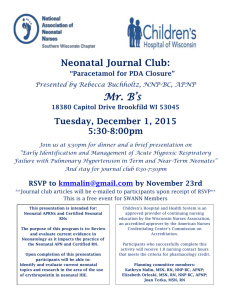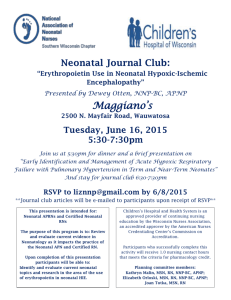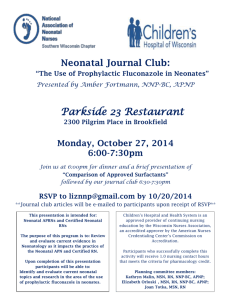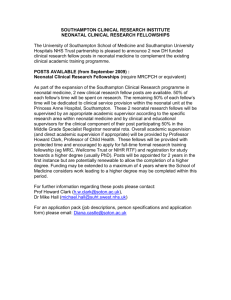Module 1A10 Polycystic Ovary Syndrome (PCOS)
advertisement
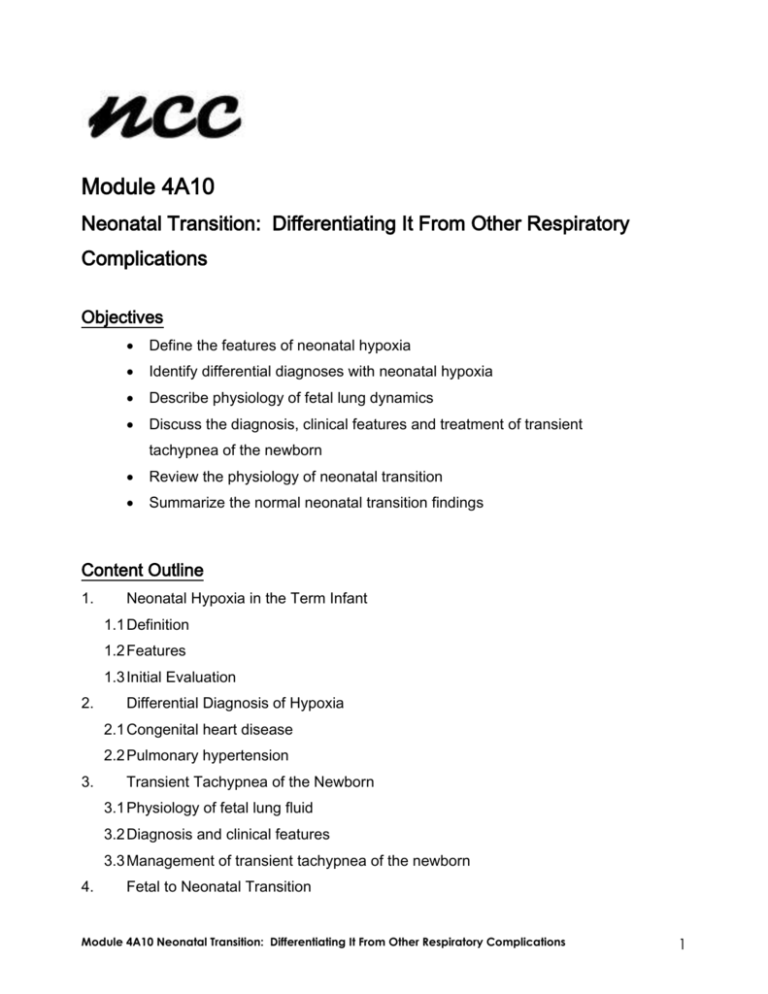
Module 4A10 Neonatal Transition: Differentiating It From Other Respiratory Complications Objectives Define the features of neonatal hypoxia Identify differential diagnoses with neonatal hypoxia Describe physiology of fetal lung dynamics Discuss the diagnosis, clinical features and treatment of transient tachypnea of the newborn Review the physiology of neonatal transition Summarize the normal neonatal transition findings Content Outline 1. Neonatal Hypoxia in the Term Infant 1.1 Definition 1.2 Features 1.3 Initial Evaluation 2. Differential Diagnosis of Hypoxia 2.1 Congenital heart disease 2.2 Pulmonary hypertension 3. Transient Tachypnea of the Newborn 3.1 Physiology of fetal lung fluid 3.2 Diagnosis and clinical features 3.3 Management of transient tachypnea of the newborn 4. Fetal to Neonatal Transition Module 4A10 Neonatal Transition: Differentiating It From Other Respiratory Complications 1 4.1 Physiology 4.1.1 Cardiovascular 4.1.2 Respiratory 4.1.3 Thermal and Metabolic 4.2 Normal Neonatal Transition Findings Reading Material Resources These articles are included in the module. “Hypoxia in the Term Newborn: Part One--Cardiopulmonary Physiology and Assessment”, Rohan, Annie J., et al., Maternal Child Nursing, Volume 34, No. 2, March/April 2009, pp. 106-112 "Transient Tachypnea of the Newborn", Guglani, MD, Lokesh, et al., Pediatrics in Review, Volume 29, No. 11, November 2008, pp. e58-e65 "Fetal-to-Neonatal Transitions--What is Normal and What is Not? Part 1: The Physiology of Transition", Askin, Debbie, Neonatal Network, Volume 28, No. 3, May/June 2009, pp. e33e36 "Fetal-to-Neonatal Transitions--What is Normal and What is Not? Part 2: Red Flags", Askin, Debbie, Neonatal Network, Volume 28, No. 3, May/June 2009, pp. e37-e40 Module 4A10 Neonatal Transition: Differentiating It From Other Respiratory Complications 2

